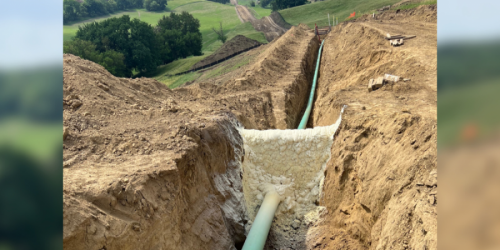Q&A Forums
Recent building code history, ICC, NFPA, IAMPO Post New Topic | Post Reply
| Author | Comments |
|---|---|
|
mason
Posted: Apr 05, 2009 11:53 AM
|
Recent building code history, ICC, NFPA, IAMPO
The post on the IAMPO Evaluation Services got me thinking that many folks in the sprayfoam industry may not be aware of the recent history of building codes in the US and how and why the ICC codes were developed and why there are competing codes such as the NFPA building code and IAMPO mechanical codes.In 1997 there were 4 code bodies across the country, each with their own set of building codes. BOCA, ICBO, SBCCI and CABO. In addition the National Fire Protection Association had a fire and electrical code and IAMPO had a plumbing/mechanical code. Each group (with the exception of NFPA) had its own evaluation services that would evaluate products and systems for compliance with their specific codes. This made it very difficult for the building community to comply with building codes, particularly when codes were written and/or interpreted different ways. It required companies to spend a great amount of time and money on compliance testing and reports. In 1997 the 4 major code bodies in the US joined together to form the International Code Congress with the intent to develop on set of codes across the country. At first it looked like the NFPA and IAMPO would join the group but eventually decided to be independent of the ICC and develop their own set of building codes together including not only the electrical code & plumbing code but also a national building code. At the time, I was performing double duty as the Technical Director for the Spray Polyurethane Foam Alliance and Technical Director for the American Plastic Council (Building and Construction Dept). As Technical Director of the APC, I was on the staff person on committees of the foam plastic groups (and vinyl plastic) that helped evaluate the proposed building codes by both groups and determine which codes the plastics industry would support. I also attended meetings of the NFPA and IAMPO regarding the code development controversy. After many meetings, the APC and its separate member groups such as Polyisocyanurate Manufacturers Association, The Polystyrene Foam Council, The Extruded Polystyrene Manufacturers Association, the Vinyl Institute and construction groups such as the AIA, NAHB, NRCA, CSI banded together in a group called “Get It Together”. The purpose was for IAMPO and NFPA and ICC to work together on settling their differences and develop one set of codes. The attempt was unsuccessful and NFPA and IAMPO continued to develop a second set of building codes in direct competition with the ICC codes. When this happened the “Get It Together” group eventually supported the ICC codes with a few exceptions. Due to this support most states and local communities currently use the ICC codes as the basis for their building codes. But, as pointed out by Urethaneman some areas such as Scottsdale, AZ and parts of California, have adopted the NFPA and IAMPO codes. This is why typically foam manufacturers will use the ICC Evaluation Services to have their materials evaluated for code approval purposes. And this is the reason I give for suggesting that an IAMPO Evaluation Reports would not be as easily accepted by building code officials who are working under the ICC codes. But, they would be accepted by code officials who are working under the IAMPO or NFPA codes. ICC website has a map that you can click on to show which states have adopted the various ICC codes. (www.iccsafe.org/government/adoption.html). For example, according to the map all states have adopted the ICC International Building Codes but the fire code has been totally adopted roughly half of the states with 7 states adopting another code or the local jurisdiction determining which code to use. PS, when the original topic was posted on the IAMPO ES, my brain did not immediately recall the organization, but when I went to the website, it all came back to me. |





























